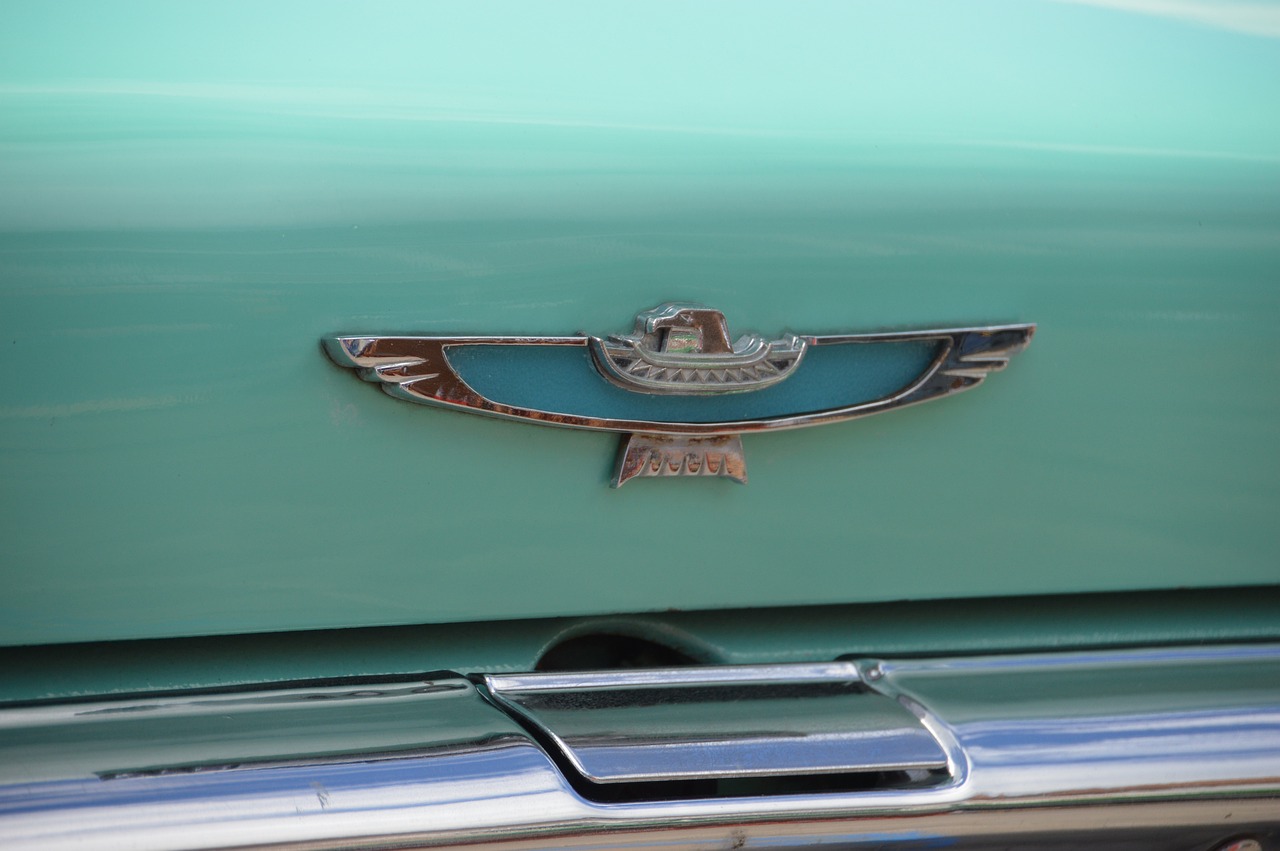Wer besitzt Aston Martin? Das sind die bislang unentdeckten Geheimnisse der Besitzreise, die jetzt enthüllt werden. In diesem Artikel werden die verborgenen Aspekte des Aston Martin-Besitzes sowie die Personen oder Unternehmen hinter dieser ikonischen Luxusautomarke erkundet.
The Founding Ownership
The founding ownership of Aston Martin holds a significant place in the brand’s history, as it laid the foundation for its early success. Lionel Martin and Robert Bamford were the visionaries behind the iconic luxury car brand, establishing it in 1913. Their shared passion for engineering and racing led them to create Aston Martin, naming it after the Aston Hillclimb race in Buckinghamshire, England.
Under their ownership, Aston Martin quickly gained recognition for its exceptional craftsmanship and performance. The duo’s relentless pursuit of excellence resulted in the development of groundbreaking automobiles that set new standards in the industry. Their dedication to innovation and attention to detail established Aston Martin as a symbol of luxury and elegance.
Through their unwavering commitment, Lionel Martin and Robert Bamford paved the way for Aston Martin’s enduring legacy, setting the stage for future ownership and the brand’s continuous evolution.
Evolution of Ownership
Die Evolution des Eigentums: Die Geschichte von Aston Martin ist geprägt von einer Reihe von Veränderungen im Eigentum, die einen erheblichen Einfluss auf die Entwicklung der Marke hatten. Seit der Gründung von Aston Martin haben verschiedene Eigentümer die Kontrolle über das Unternehmen übernommen und ihre eigenen Spuren hinterlassen.
Von den frühen Tagen, als Lionel Martin und Robert Bamford das Unternehmen gründeten, bis hin zu den jüngsten Eigentümerwechseln hat Aston Martin eine faszinierende Reise durchlaufen. Jeder neue Eigentümer brachte seine eigenen Ideen, Ressourcen und Visionen mit sich, die das Unternehmen geprägt haben. Diese Veränderungen im Eigentum haben dazu beigetragen, Aston Martin zu dem ikonischen Luxusautomobilhersteller zu machen, der es heute ist.
Key Ownership Transitions
Key Ownership Transitions:
Throughout its storied history, Aston Martin has experienced several significant ownership transfers that have played a crucial role in shaping the brand’s identity and direction. These transitions have not only brought new perspectives and resources to the table but have also influenced the design, technology, and global reach of Aston Martin vehicles.
One of the most notable ownership transitions in Aston Martin’s journey was the acquisition by David Brown in 1947. Brown’s ownership marked a turning point for the brand, as he introduced innovative engineering and design elements that propelled Aston Martin to new heights. Under his leadership, iconic models like the DB series were born, cementing Aston Martin’s reputation as a symbol of luxury and performance.
- 1947: Acquisition by David Brown
- 1994: Ford’s ownership
- 2007: Consortium led by Prodrive’s David Richards
- 2018: Investment by Lawrence Stroll
Another significant ownership transition occurred in 1994 when Ford Motor Company acquired Aston Martin. This brought substantial financial backing and access to advanced technologies, enabling Aston Martin to expand its product lineup and appeal to a wider audience. Ford’s ownership played a pivotal role in the brand’s global growth and paved the way for collaborations with renowned designers and engineers.
As Aston Martin continues to evolve, the ownership landscape remains dynamic. With each transition, the brand’s identity and direction are shaped by the vision and resources of new owners. These ownership transfers have not only injected fresh energy into Aston Martin but have also positioned it as a formidable player in the luxury car market.
The David Brown Era
The David Brown Era marked a significant turning point in Aston Martin’s history, as David Brown’s ownership brought about transformative changes to the luxury car brand. David Brown, a successful British industrialist, acquired Aston Martin in 1947 and played a pivotal role in shaping its future. Under his ownership, Aston Martin experienced a period of innovation and success.
One of David Brown’s most notable contributions was the introduction of the iconic DB series, which included legendary models like the DB2, DB4, and DB5. These cars not only showcased cutting-edge design and engineering but also became synonymous with elegance and performance. The DB5, in particular, gained global fame through its appearance in James Bond films, solidifying Aston Martin’s status as a luxury brand.
Beyond the DB series, David Brown also prioritized motorsport, leading Aston Martin to numerous victories in prestigious races such as the 24 Hours of Le Mans. His commitment to excellence and performance helped elevate Aston Martin’s reputation and cement its position as a leader in the automotive industry.
The Ford Era
The Ford Era marked a significant chapter in the history of Aston Martin, as the iconic luxury car brand came under the ownership of the American automotive giant. With Ford’s resources and expertise, Aston Martin experienced a remarkable transformation in design, technology, and global reach.Under Ford’s ownership, Aston Martin underwent a major revamp in terms of design. The brand introduced sleek and modern designs that captivated car enthusiasts worldwide. The iconic DB9, Vantage, and Vanquish models showcased Ford’s commitment to pushing the boundaries of automotive design, setting new industry standards.In addition to design, Ford’s ownership also brought advancements in technology to Aston Martin. The brand incorporated cutting-edge technologies into its vehicles, enhancing performance, safety, and driver experience. From advanced engine systems to innovative infotainment features, Aston Martin became synonymous with sophistication and technological excellence.Furthermore, Ford’s global reach played a vital role in expanding Aston Martin’s presence across international markets. Leveraging Ford’s extensive distribution network, Aston Martin gained access to new markets and a wider customer base. This strategic expansion allowed the brand to establish itself as a global luxury car manufacturer, solidifying its position in the competitive automotive industry.Overall, the Ford Era was a transformative period for Aston Martin. Through its ownership, Ford left an indelible mark on the brand’s design language, technological innovation, and global footprint. The impact of this era continues to shape Aston Martin’s identity and success to this day.
Current Ownership Landscape
The current ownership landscape of Aston Martin provides a fascinating glimpse into the intricate web of stakeholders involved in the iconic luxury car brand. At present, Aston Martin is primarily owned by a consortium of investors led by Lawrence Stroll, a Canadian billionaire and Formula One team owner. Stroll’s investment in Aston Martin has injected new life into the brand, bringing fresh ideas and resources to propel it forward.
In addition to Lawrence Stroll, other key stakeholders in Aston Martin include Mercedes-Benz, which holds a 20% equity stake in the company. This collaboration with Mercedes-Benz has resulted in the sharing of technology and expertise, further enhancing Aston Martin’s capabilities. The partnership has also opened doors to new markets and opportunities for the brand.
Furthermore, Aston Martin has a diverse range of investors and shareholders, including institutional investors, private equity firms, and individual shareholders. Each of these stakeholders plays a crucial role in shaping the direction and future of Aston Martin, contributing their expertise and resources to ensure the brand’s continued success.
Future Ownership Prospects
When it comes to the future ownership of Aston Martin, the possibilities are vast and intriguing. As the luxury car brand continues to evolve and adapt to the ever-changing automotive landscape, speculation about potential ownership scenarios arises. These scenarios hold significant implications for the brand’s future direction and the experiences it offers to its discerning customers.
One potential future ownership scenario for Aston Martin could involve acquisition by another luxury car manufacturer. In the competitive automotive industry, consolidation is not uncommon, and the acquisition of Aston Martin by a fellow luxury brand could lead to exciting collaborations and synergies. Imagine the fusion of Aston Martin’s timeless elegance with the cutting-edge technology and performance of another renowned brand.
Another possibility lies in the emergence of new investors, individuals, or companies interested in acquiring ownership stakes in Aston Martin. This could inject fresh capital and innovative ideas into the brand, potentially opening doors to new markets and expanding its global reach. With the right investment and strategic vision, Aston Martin could continue to push boundaries and redefine the luxury car industry.
The future ownership prospects for Aston Martin are full of anticipation and promise. Whether it involves a partnership with another luxury car manufacturer or the entry of new investors, the brand’s journey is poised for exciting twists and turns. As Aston Martin enthusiasts eagerly await the unfolding of these ownership scenarios, one thing is certain: the future of this iconic luxury car brand is bound to be nothing short of extraordinary.
Industry Competitors
Die Möglichkeit, dass Aston Martin von anderen Luxus-Automobilherstellern in der wettbewerbsintensiven Automobilindustrie übernommen wird, wird genau analysiert. In dieser hochkompetitiven Branche sind viele Unternehmen bestrebt, ihre Marktposition zu stärken und ihr Produktportfolio zu erweitern. Angesichts des renommierten Rufes und des ikonischen Status von Aston Martin könnte es für andere Luxus-Automobilhersteller äußerst attraktiv sein, das Unternehmen zu erwerben.
Es gibt verschiedene potenzielle Käufer, die als Hauptkonkurrenten von Aston Martin angesehen werden könnten. Diese Konkurrenten könnten von etablierten deutschen Automobilherstellern wie BMW, Mercedes-Benz oder Audi bis hin zu anderen britischen Luxusmarken wie Rolls-Royce oder Bentley reichen. Eine Übernahme durch einen dieser Wettbewerber würde zweifellos zu einer Fusion von Know-how und Ressourcen führen und die Position von Aston Martin in der Automobilindustrie weiter stärken.
Emerging Investors
Emerging Investors play a crucial role in shaping the future of Aston Martin’s ownership landscape. With the luxury car brand’s rich history and iconic status, it has attracted the attention of various individuals and companies seeking to acquire ownership stakes. These emerging investors bring fresh perspectives, innovative ideas, and potential financial backing to the table, which can greatly influence Aston Martin’s direction and growth.
One potential scenario is the involvement of high-net-worth individuals who have a passion for luxury cars and a desire to be part of the Aston Martin legacy. Their investment could provide the brand with the necessary resources to develop cutting-edge technologies, expand into new markets, and create even more exceptional vehicles. Additionally, established automotive companies looking to diversify their portfolio may also express interest in acquiring ownership stakes in Aston Martin, leveraging their expertise and resources to further enhance the brand’s global reach and competitiveness.
As the automotive industry continues to evolve and new players emerge, the interest of these emerging investors in Aston Martin reflects the enduring appeal and potential of the brand. Their involvement could pave the way for exciting collaborations, strategic partnerships, and groundbreaking innovations that propel Aston Martin into the future as a leading luxury car manufacturer.
Häufig gestellte Fragen
- Wer sind die ursprünglichen Eigentümer von Aston Martin?
Die ursprünglichen Eigentümer von Aston Martin waren Lionel Martin und Robert Bamford. Sie gründeten das Unternehmen im Jahr 1913 und legten damit den Grundstein für den Erfolg der Marke.
- Welche Auswirkungen hatte die Ford-Ära auf Aston Martin?
Die Ford-Ära hatte einen erheblichen Einfluss auf Aston Martin. Ford erwarb das Unternehmen im Jahr 1987 und investierte in neue Technologien, Designverbesserungen und globale Expansion. Dies führte zu einer Modernisierung der Marke und einer Steigerung ihrer Bekanntheit weltweit.
- Wie sieht die aktuelle Eigentümerstruktur von Aston Martin aus?
Die aktuelle Eigentümerstruktur von Aston Martin umfasst verschiedene Investoren und Unternehmen. Ein bedeutender Anteil gehört der Investorengruppe Lawrence Stroll, der auch als Executive Chairman von Aston Martin tätig ist. Weitere Anteilseigner sind verschiedene institutionelle Investoren und private Kapitalgeber.
- Welche möglichen zukünftigen Eigentums Szenarien gibt es für Aston Martin?
Es gibt verschiedene potenzielle zukünftige Eigentumsszenarien für Aston Martin. Eine Möglichkeit ist, dass andere Luxusautohersteller das Unternehmen erwerben könnten, um ihre Marktposition zu stärken. Es besteht auch Interesse von neuen Investoren, die Eigentumsanteile an Aston Martin erwerben möchten, um von der Marke und ihrem Potenzial zu profitieren.
- Wer sind die Hauptkonkurrenten von Aston Martin in der Automobilindustrie?
Aston Martin hat in der Automobilindustrie verschiedene Konkurrenten. Zu den Hauptkonkurrenten zählen andere Luxusautohersteller wie Ferrari, Lamborghini und Bentley. Diese Unternehmen konkurrieren um ähnliche Zielgruppen und streben nach Exklusivität und Innovation.

